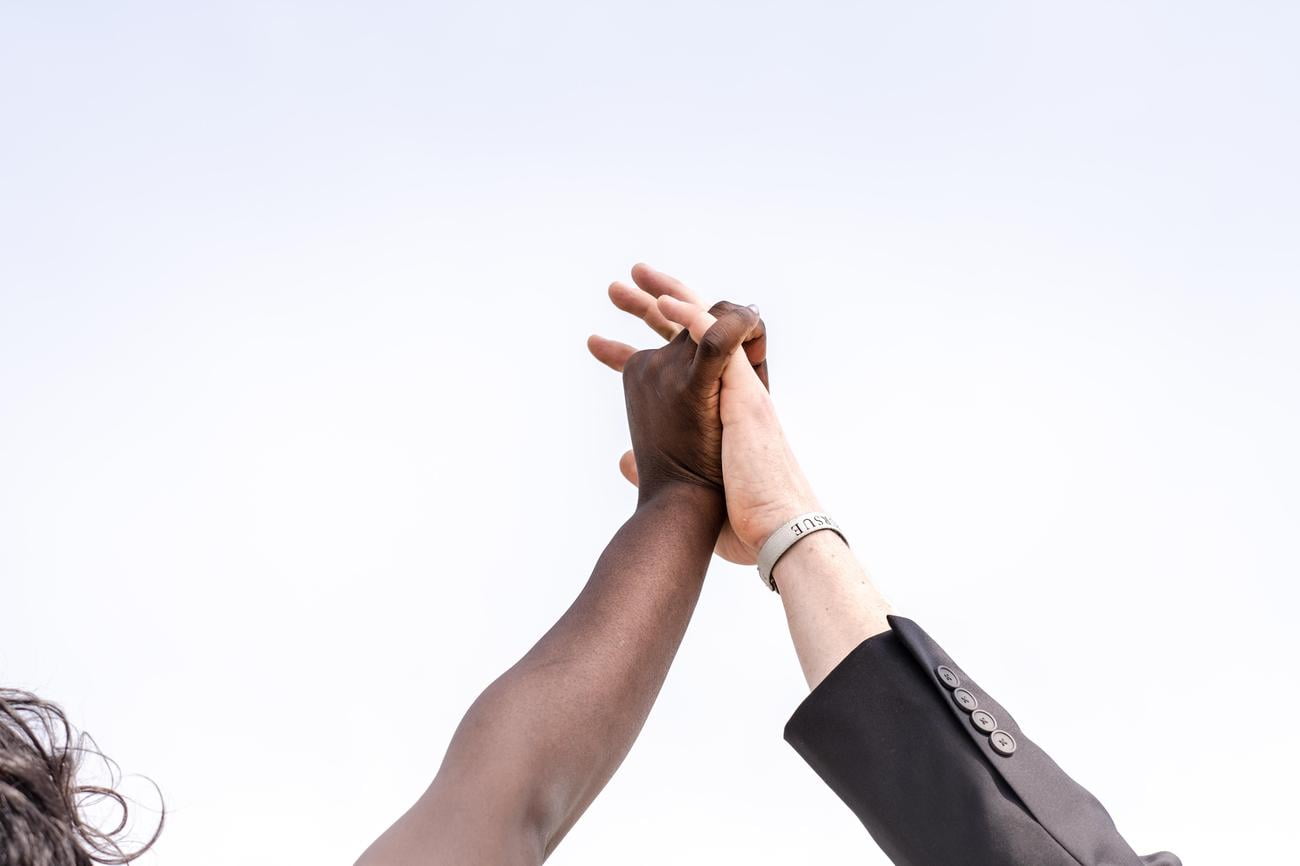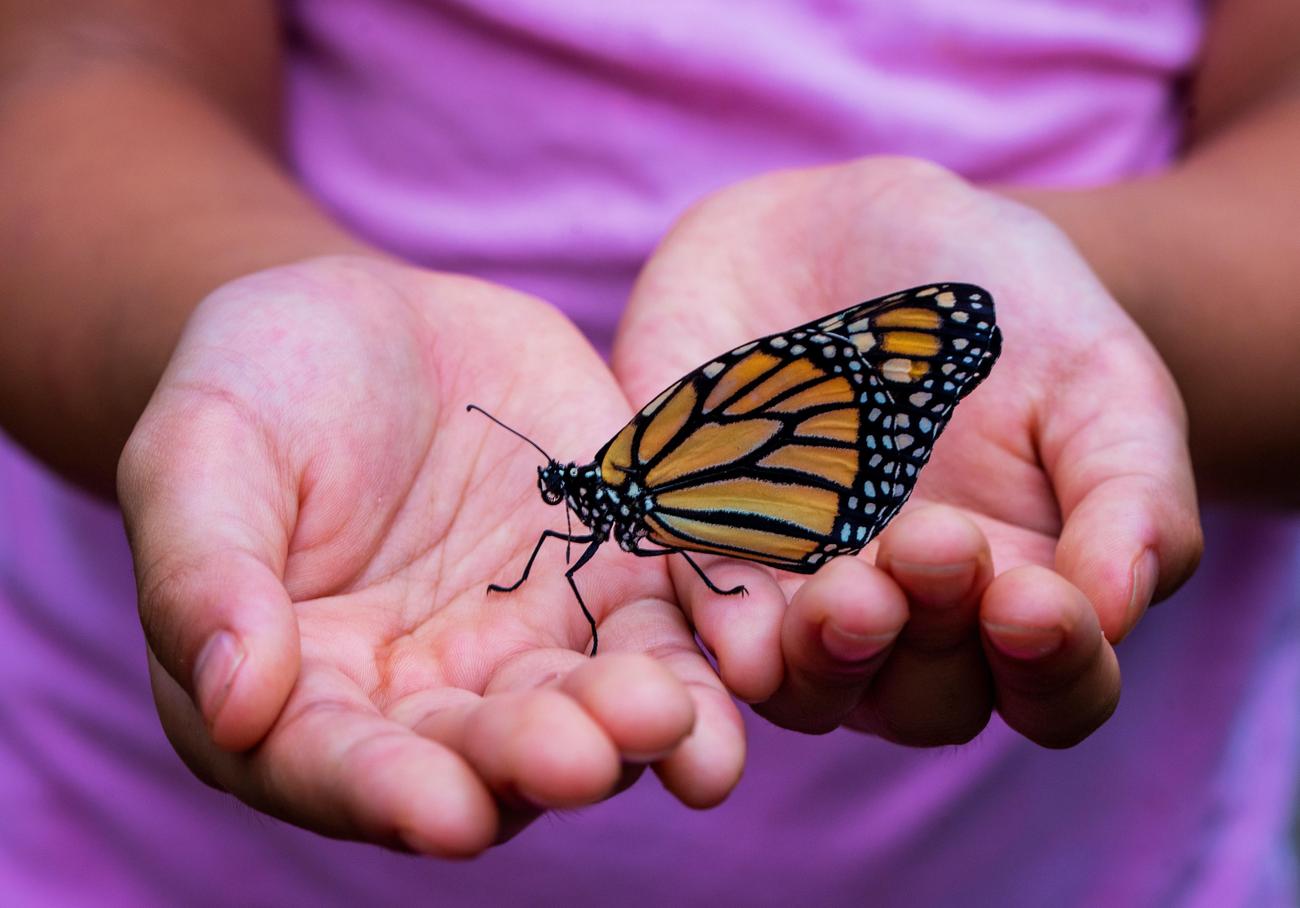Discover Fascinating Facts About Our Hands: Anatomy, Sensory Perception, Dexterity & More! If you’ve ever wondered about the incredible intricacies of the human hand, then look no further. In this captivating article, we will delve into the world of hands, exploring everything from their anatomy to their sensory perception and dexterity. As one of the most essential tools we possess, our hands play a vital role in communication, interaction with our environment, and daily activities. With the expertise of an experienced medical researcher and a passion for educating readers, this article will uncover 18 interesting facts about human hands, shedding light on their remarkable capabilities and the fascinating role they play in our lives.

Facts About Our Hands
The human hand is truly remarkable, with a complex structure and astonishing capabilities. Let’s delve into some fascinating facts about our hands that highlight their anatomy, sensory perception, dexterity, and more!
Bones and Joints
Our hands may not seem significant compared to the rest of our bodies, but they actually contain a whopping 25% of all the bones in the human skeleton. With 27 bones working in harmony, our hands are the ultimate tools for manual dexterity and manipulation. Moreover, we have 29 joints within our hands, providing excellent mobility and flexibility. These joints, along with the at least 123 named ligaments, enable us to perform intricate tasks, such as writing, playing musical instruments, and crafting delicate objects.
The intricate network of bones and ligaments within our hands allows for the remarkable dexterity we often take for granted.
Muscles and Blood Supply
It’s not just bones and joints that make our hands so incredible; the over 30 specialized muscles in our hands play a crucial role in their movement and function. These muscles work in perfect coordination with the joints, bones, and nerves, allowing us to perform a wide range of activities, including typing, painting, and playing sports. In addition, our hands receive a rich blood supply from two main arteries, ensuring they have the oxygen and nutrients necessary to carry out their intricate tasks.
The intricate interplay between our muscles, joints, bones, and nerves gives our hands their remarkable ability to move and perform various tasks.
The Opposable Thumb
One of the defining characteristics of our hands is the presence of an opposable thumb. This unique feature differentiates us from most animals, except for koalas. The opposable thumb allows us to grasp objects, manipulate tools, and perform complex movements with precision. Thanks to our opposable thumbs, we can pick up a pen, use a smartphone, or tie shoelaces effortlessly.
Our opposable thumbs are like the unsung superheroes of our hands, granting us unparalleled dexterity and control.
Tanning Quirk
The human hand has an interesting quirk when it comes to tanning. While our skin may tan when exposed to sunlight, the palms and undersides of our fingers remain resistant to tanning. This is due to the thickness of the skin in these areas and the absence of certain pigments that respond to UV rays. So, the next time you’re soaking up some sun, take a look at your palm and marvel at its untanned perfection!
The palm and underside of our fingers defy the sun’s rays, reminding us of the unique qualities our hands possess.
Left-Handed and Ambidextrous Individuals
Handedness is a fascinating aspect of human variation. Surprisingly, only about 10 to 15% of the human population is left-handed, meaning they predominantly use their left hand for manual tasks. In contrast, those who are ambidextrous, capable of using both hands equally well, make up a mere one in every hundred individuals. The reasons behind these differences in handedness are still being explored by researchers.
Whether we’re left-handed, right-handed, or ambidextrous, our hands showcase the diversity and uniqueness of human abilities.
In conclusion, our hands are truly incredible marvels of nature. From their intricate bone structure to their versatile muscles and specialized thumb, these remarkable appendages define who we are as humans. The incomparable dexterity and sensory perception offered by our hands enable us to interact with the world around us and express ourselves in extraordinary ways.
Our hands are not just simple tools; they are complex and extraordinary extensions of our minds and bodies.
Facts About Our Hands
Our hands are extraordinary tools that allow us to interact with the world around us. Have you ever wondered why do my hands shake? It’s a common concern that many people have. Whether it’s due to anxiety, caffeine, or an underlying medical condition, hands shaking can be disruptive and concerning. But don’t worry, we have the answers! Check out our informative article on why do my hands shake, and discover the root causes and possible treatments for this common issue. It’s time to regain control and find the solutions you’re looking for. Click here to read more: why do my hands shake.
Now, let’s talk about another hand-related concern. Have you ever used self-tanner and struggled to get it off your hands? If so, we have just the solution for you! Learn how to get self tanner off hands with our helpful tips and tricks. No more worrying about stained palms or uneven color. Our step-by-step guide will have your hands looking fresh and natural in no time. Say goodbye to self-tanner mishaps and hello to flawless hands. Click here for more information: how to get self tanner off hands.
But wait, there’s more! Have you ever experienced that unpleasant tingling sensation or temporary loss of feeling in your hands? It can be a puzzling and uncomfortable phenomenon. Let us shed some light on why do my hands go numb and explore the underlying causes. From poor circulation to nerve compression, there are several factors that can contribute to this issue. Discover the answers and potential remedies for numb hands by clicking here: why do my hands go numb.
Our hands are amazing and complex parts of our bodies. Don’t let common concerns hold you back from fully enjoying life. Explore our informative articles and take charge of your hand health today.
Introduction to the Human Hand
The human hand is an incredible and complex marvel of nature. It is a five-finger appendage located at the end of our forearms, serving as our primary tool for interacting with the world. This article will delve into the fascinating facts about our hands, exploring their anatomy, sensory perception, dexterity, and other remarkable abilities that make them essential for communication and interaction with our environment.
Our hands allow us to manipulate objects, lift heavy loads, and perform intricate tasks with our fingers. They possess the remarkable ability to grasp, hold, and release objects with great precision. But what truly sets our hands apart from other animals is the presence of opposable thumbs. The opposable thumbs enable our thumbs and fingers to work together, giving us the dexterity and versatility to perform a wide range of tasks.
The human hand consists of 27 bones, 29 joints, and at least 123 named ligaments, all working in perfect harmony to facilitate movement and provide stability. With these intricate structures, our hands can perform complex movements while ensuring the stability needed for everyday tasks.
The tendons of hand muscles run into the fingers and attach to the bone, enabling finger movement. These tendons act as cables, transmitting the force produced by forearm muscles to the fingers, allowing for precise control and movement. In fact, did you know that fingers themselves do not have muscles? Their movement is controlled by tendons connected to muscles in the forearm. It’s a remarkable system of coordination that allows us to effortlessly grasp and manipulate objects.
Our hands also play a vital role in protecting the rest of our body. They are equipped with numerous sensory receptors, providing us with a wealth of information about our environment. Through touch, we can experience textures, temperatures, and even pain, allowing us to navigate the world around us and adapt to various situations.
Unfortunately, hand injuries are not uncommon. Fractures, sprains, strains, dislocations, and tendon injuries can all occur, affecting our ability to use our hands effectively. It is crucial to take care of our hands and seek professional medical attention if any injury occurs, as prompt treatment can greatly improve the chances of recovery and restore hand functionality.
Apart from their functional aspects, our hands also hold interesting trivia. For example, did you know that the average hand length for adult women is 6.7 inches, while adult men have an average hand length of 7.4 inches? It’s also fascinating to note that men generally have longer hands than women.
Moreover, our hands play a significant role in maintaining hygiene. It is important to wash our hands frequently to prevent the spread of germs and diseases. However, studies suggest that many people fail to wash their hands after using the toilet. So, how frequently do you wash your hands?
In terms of appearance, have you ever noticed that tanning does not occur on the palm of the hand? This is due to the thickness of the skin and the absence of certain pigments. Similarly, wet hands can spread more germs than dry hands, highlighting the importance of thorough hand drying after washing.
To truly appreciate the marvel of our hands, let’s take a closer look at their anatomy. The human hand consists of 8 carpal bones, 14 phalange bones, and 5 metacarpal bones. Each bone plays a crucial role in providing structure and movement, allowing us to perform a wide range of actions with precision and control.
The evolution of the human hand is believed to be influenced by the development of throwing and clubbing abilities. Our ancestors’ ability to throw objects and use tools effectively played a significant role in the development of the human hand as we know it today. It is this evolution that has granted us the incredible capabilities and adaptability of our hands.
In conclusion, our hands are truly remarkable tools that enable us to navigate and interact with the world. From their intricate anatomy to their sensory perception and exceptional dexterity, our hands play an irreplaceable role in our daily lives. So, the next time you grasp an object or engage in a delicate task, take a moment to appreciate the extraordinary abilities of your hands.
“Our hands are not merely tools; they are extensions of our identities, enabling us to express ourselves and connect with the world in profound ways.”
18 Interesting Facts About Human Hands
Our hands play an irreplaceable role in our daily lives, allowing us to express ourselves and connect with the world. But did you know that there are some truly fascinating facts about our hands? Let’s dive into the amazing world of our hands and explore the intricate details that make them such remarkable tools for interaction and communication.
A Marvel of Bones and Ligaments – The human hand is composed of 27 bones, 29 joints, and at least 123 named ligaments. These structures work together to provide the necessary mobility and flexibility that allow us to perform intricate movements.
Opposable Thumbs: Uniquely Human – The presence of opposable thumbs sets our hands apart from those of other animals. This extraordinary adaptation enables us to grasp objects and perform complex movements with precision and versatility. From holding a pencil to manipulating tools, our thumbs are essential for our dexterity.
Sun-Kissed Skin? Not on the Palms! – Did you know that it is not possible to get a tan on the palm and underside of the fingers? This is because the skin in these areas is thicker and lacks certain pigments. So the next time you’re out catching some rays, remember that your palms will always remain sun-kissed free.
The Weight of a Hand – On average, an adult human male’s hand weighs about a pound. When we consider the complexity and intricacy of the structures within our hands, it’s truly remarkable how these relatively small appendages can carry such weight and perform incredible tasks.
The Left-Handed Minority – Only 10 to 15% of the entire human population is left-handed. If you’re one of them, you’re part of a unique group! On the other hand (pun intended), only about one in every hundred people are ambidextrous. These individuals possess the rare ability to use both hands with equal skill and dexterity.
“Our hands, with their intricate structures and astonishing capabilities, are a testament to the amazing wonders of the human body.”
A Tapestry of Nerve Endings – Our fingers contain some of the densest areas of nerve endings in the body, making them a rich source of tactile feedback. These sensory receptors allow us to feel and navigate our environment with precision. From experiencing textures and temperatures to perceiving pain, our hands are truly marvels of sensory perception.
Thumbs Up, or Thumbs Down? – The presence of opposable thumbs not only allows us to grasp objects but also gives us the ability to perform intricate movements. Can you imagine trying to button a shirt or tie shoelaces without our versatile thumbs? Our opposable thumbs give us the dexterity and versatility that make these tasks possible.
“The opposable thumbs on our hands are like flexible hinges, enabling us to maneuver through life’s challenges with ease and grace.”
Left, Right, or Ambidextrous? – Whether we’re left-handed, right-handed, or even ambidextrous, our hands are key to how we interact with the world. While only a minority of people are left-handed, and an even smaller fraction are ambidextrous, each hand possesses its own unique abilities and strengths. So, embrace your dominant hand and appreciate its individuality!
Working in Harmony – Our hands consist of bones, joints, ligaments, and over 30 specialized muscles that work together in harmony. This orchestration allows us to perform a wide range of movements, from delicate tasks like writing and playing a musical instrument to more forceful actions like lifting weights or gripping objects tightly.
The Blood Supply – Our hands receive a rich blood supply from two main arteries, the ulnar and radial arteries. This ensures that our hands have the necessary oxygen and nutrients to function optimally. From typing to painting, the blood coursing through our hands fuels our creativity and productivity.
“The intricate interplay between bones, joints, ligaments, muscles, and blood vessels in our hands is a testament to the inner symphony of our bodies.”
A Window to the Soul – Our hands are not only tools for interaction but also mirrors of our personality and emotions. The way we use our hands to gesture while speaking or the warmth they convey in a comforting touch speaks volumes about our innermost thoughts and feelings. Our hands reflect our individuality and form an integral part of our identity.
The Artistry of Palmistry – Palmistry, the ancient art of analyzing the lines and features on the palm, has intrigued people for centuries. This practice suggests that our palms hold clues about our personalities, strengths, and destinies. While the scientific validity of palmistry remains debatable, its endurance throughout history demonstrates the enduring fascination with the intricacies of our hands.
A Symphony of Movements – Our hands possess the remarkable ability to grasp, hold, and release objects with precision. Whether we’re picking up a pen or playing a musical instrument, the coordinated movements of our fingers, aided by tendons connected to muscles in the forearm, allow us to perform incredibly intricate tasks.
A Sense of Exploration – Our hands are our primary tools for exploring and understanding the world around us. Through touch, we gather information about textures, temperatures, and shapes. Our hands allow us to navigate our environment and connect with the physical world in ways that no other appendage can.
A Canvas for Expression – Much like an artist’s paintbrush or a writer’s pen, our hands serve as instruments of expression. From sign language and hand gestures to intricate hand movements in dance or sports, our hands are vehicles through which we communicate and create meaning.
Steering Our Destiny – The evolution of the human hand was heavily influenced by the development of throwing and tool use. Our ancestors’ ability to fashion tools and wield them with precision enabled them to adapt to their environment, shape their world, and ultimately steer the course of human history.
The Healing Touch – Our hands not only interact with the world around us but also play a crucial role in healing and caring for others. From the gentle touch of a caregiver to the skilled hands of a surgeon, our hands have the power to bring comfort, heal wounds, and restore health.
A Lifelong Journey – Our hands, with their intricate anatomy and remarkable capabilities, accompany us throughout our lives. From the first moment we grasp our parent’s finger as infants to the last time we hold the hand of a loved one, our hands are constant companions on the unique journey we call life.
“As we embark on our life’s journey, our hands guide us, connect us, and leave an indelible mark on the world.”
| Facts | |
|---|---|
| 1. | The human hand contains 27 bones, 29 joints, and at least 123 named ligaments. |
| 2. | Opposable thumbs set our hands apart from other animals. |
| 3. | It is not possible to get a tan on the palm or underside of the fingers. |
| 4. | An adult human male’s hand weighs about a pound. |
| 5. | Only 10 to 15% of the population is left-handed, while ambidextrous individuals make up one in every hundred people. |
| 6. | Fingers contain some of the densest areas of nerve endings, providing a rich source of tactile feedback. |
What Your Hands Say About Your Personality
[youtube v=”ozJdKFd8pXw”]
Hand Analysis: Exploring Palm Shape and Finger Length
We all enjoy taking personality tests to gain insight into ourselves. But did you know that your hands can also reveal a lot about your personality? According to experts from the American Academy of Hand Analysis, the shape of your palm and the length of your fingers can provide revealing clues about your character. So, let’s dive into the fascinating world of hand analysis and discover what your hands say about you.
Determine Your Strong Hand
First, let’s establish which is your dominant hand – the one you use most often. Whether you are right-handed or left-handed, your dominant hand’s palm and fingers reflect your business and personal qualities. On the other hand (no pun intended), the fingers on your non-dominant hand reveal insights into your attitude towards your family and friends. So, take a moment to assess your strong hand and gain a deeper understanding of yourself.
Determine Your Strong and Weak Fingers
Every person has both strong and weak fingers, and the relative strength of each finger can indicate certain traits of your character. If a finger is bent or unable to perform certain tasks, it is considered weak. Conversely, if a finger is long and straight, it is seen as strong. Paying attention to the fingers on your dominant hand is essential for accurate analysis.
For example, a strong thumb on your dominant hand suggests ambition, talent, and a desire for success in your profession. Strong thumbs have been associated with great achievers throughout history, like Albert Einstein and Pablo Picasso. On the other hand, a strong index finger signifies an interest in power, shrewdness, and willpower. Take Kanye West, for instance, whose long index finger exemplifies these traits.
The middle finger symbolizes responsibility, efficiency, growth, and wisdom. Notably, Pope Francis possesses an exceptionally strong middle finger, reflecting his undeniable sense of responsibility and wisdom.
Moving on to the ring finger, it represents artistry and self-expression. Oprah Winfrey’s longer ring finger, compared to her index finger, speaks to her creativity and charisma.
Finally, the little finger signifies communicative skills. When this finger is weak, it may indicate relationship issues and problems with self-identity. Lindsay Lohan’s curved little finger seems to align with her publicized struggles.
Analyze Your Hand Shape
Just as astrological signs are associated with different elements, hand shape is also linked to the elements of fire, earth, water, and air. By examining your hand shape, you can gain insights into your personality traits.
Fire types have long rectangular palms and short fingers. They are adventurous and action-oriented individuals who exude charisma and possess leadership qualities. Whitney Houston, known for her energetic and ambitious nature, had the hands of a fire type.
Earth types, on the other hand, have square or rectangular palms and short fingers. They are realistic, reliable, and practical. Earth types are committed to their work and relationships, making them successful in both aspects of their lives. Notable earth types include Barack Obama, Bill Clinton, and even Prince William, as evidenced by his commitment to his relationship with Kate Middleton.
Water types are recognized by their oval palms and long, elegant fingers. These individuals are known for their creativity, empathy, and compassionate nature. Angelina Jolie, famous for her kind heart and devotion to humanitarian causes, exemplifies the characteristics of a water type.
Lastly, air types have square or rectangular palms and long fingers. They are exceptionally intelligent individuals with analytical minds. Their thirst for knowledge, communication skills, and charm make them highly sociable. Michelle Obama is a prime example of an air type, with her ability to captivate and inspire through her speeches and charisma.
Look at the Gaps Between Your Fingers
The spaces between your fingers can also reveal interesting aspects of your personality. When assessing your hands, pay attention to the distance between your fingers – it can provide valuable insights.
If your fingers are wide apart, you are likely independent and open to experimentation. On the other hand, closely set fingers indicate prudence, carefulness, and a tendency to be self-contained.
The gap between your ring finger and middle finger also holds significance. A wider gap suggests that you are hard to influence, while a closer gap implies a tendency to conform to societal expectations and follow the rules.
When comparing the distance between your ring and little finger with that of your friends, you can gain further understanding. A wider gap indicates a reluctance to engage in serious discussions and make important decisions – a trait that can affect your work and personal relationships. Conversely, if the gap appears average, you likely possess independent thinking and an adventurous spirit.
The Science Behind Hand Analysis
While some may consider hand analysis as mere pseudoscience, it is gaining recognition among scientists and researchers. Therapists, counselors, and even geneticists are beginning to take hand analysis more seriously. Our fingerprints, which develop before birth, are believed to be connected to neural pathways in the brain that shape our thoughts and actions throughout our lives. Moreover, certain genetic disorders and hand shapes have been found to be linked. As a result, hand analysis may have a promising future in the study of genetic abnormalities.
In conclusion, your hands offer intriguing insights into your personality and character traits. By examining the shape of your palms, the length of your fingers, and the spaces between them, you can gain a deeper understanding of your own strengths, weaknesses, and potential. Hand analysis provides a unique tool for self-reflection, self-improvement, and emotional well-being. So, take a moment to observe your hands and unlock the secrets they hold.
“Your hands are a reflection of your true self. Every crease, every line, and every shape tells a story about who you are.”

FAQ
Question: How many bones, joints, and ligaments does the human hand have?
Answer: The human hand consists of 27 bones, 29 joints, and at least 123 named ligaments.
Question: What sets the human hand apart from other animals?
Answer: The presence of opposable thumbs is what sets our hands apart from other animals.
Question: Is it possible to get a tan on the palm and underside of the fingers?
Answer: No, tanning does not occur on the palm and underside of the fingers.
Question: How much does an adult human male’s hand weigh?
Answer: An adult human male’s hand weighs about a pound.
Question: What percentage of the human population is left-handed or ambidextrous?
Answer: Only 10 to 15% of the entire human population is left-handed, while only one in one hundred people are ambidextrous.
















